Introduction
The current global market is characterized with intensive competition and strict profit margin. The one and only way for any organization to sustain in the market is to maximize customer satisfaction through better customer service. Any organization requires support from the customers to be successful in the market. Most of the companies concentrate on product quality, but the factor that differentiates a world class company from an ordinary company is the additional customer service provided by it. So, an organization should give more concentration to customer satisfaction through which customer loyalty is gained. Customer loyalty is gained when the customers feel that they are given more attention and the organization is giving more value to them. An organization can increase customer loyalty by understanding the taste and preferences of their customers and by being able to meet their requirements.
By maintaining a harmonious relationship with the customers, the organization will be able to know what the customers need and what type of products they need. This information can be obtained through an electronic customer relationship management system. Managing customer relationship is considered to be a complex task. In the current scenario, most of the organizations give more value to customer relationship management because that has become one of the major competitive differentiator. It is a systematic process of improving the overall profitability of the organization by maintaining a powerful relationship with the customers through online marketing. The implementation of e-CRM helps in reducing the cognitive dissonance arising in the minds of the consumers. “An eye-level look at e-CRM that leaves out the hype and exposes the difficulties. On-the-nose perspectives and first-hand accounts provide an education so you won’t have to take it on the chin when managing your own customer-centric projects.” – Jim Sterne, Target Marketing of Santa Barbara. So, in order to increase customers, an organization should give more emphasis on developing customer relationship strategies. E-CRM or Electronic Customer Relationship Management simply means managing the relationships with the customers by using internet as a medium. Customer Relationship Management or CRM involves developing a number of strategies and latest technologies that are useful for building a strong relationship with the customers. The CRM system records all the information related to the customers, analyzing this information and helping in identifying the customers’ taste and preferences.
Enterprise Marketing Automation is one of the aspects that is included in the electronic customer relationship management. Enterprise marketing automation is mainly used for marketing a product through internet. It is an internet market campaigning done for a product. This concept is included in the customer relationship management. It provides all sorts of information which reflect the growth of the organization and success of a product. The information basically includes the current trends in the industry, new product in the market, and also includes information about the competitors. “EMA is a CRM module (or Independent software) that helps a business plan and run marketing campaigns. It helps a business by maintaining, managing and filtering prospective customers and provides a targeted short list to run campaign.”
Background Information
In older days, the customers were not treated properly. But in the current scenario the customers are regarded as the king of the market. In 1970’s and 1980’s the concept of customer relationship management was only for namesake. Organizations did not give much importance to the concept of customer relationship management. In those days, customer relationship meant answering some questions of the customers. Due to less competition, customers had little choice even when organizations made them hold a call for an hour or more to get a query answered. In the mid 1990’s the concept of e-CRM emerged as a result of increased use of internet by the customers and organizations. This is also the time when two new concepts emerged, namely, deregulation and internet. The increased use of internet, intranet and extranet made the customers more aware about the quality in customer service. E-CRM can also be referred as e-services as it involves online transactions.
The enterprise marketing automation helps the sales and marketing team to reach the right customers at the right place and at the right time. Before the emergence of internet, the customers were totally ignored. As years passed the level of competition in the market increased forcing organizations to give more focus to customer satisfaction. Organizations started realizing that in order to sustain in the market they have to maintain powerful relationship with the customers. The enterprise marketing automation as a component within CRM plays a significant role in retaining the existing customers and attracting new customers and maintaining customer loyalty. The emergence of e-CRM paved the way for the organizations to understand the value of retaining the customers. Most of the companies started practising this concept and have found that the degree of customer satisfaction and the number of loyal customers has increased. The success of CRM depends upon the performance of the sales and marketing team in the organization. “CRM is a business strategy designed to optimize profitability, revenue, and customer satisfaction” – Gartner Group.”
Problem Statement
The implementation of e-CRM may not be effective for every organization. By understanding the cost and the contribution made by each marketing channels in acquiring and retaining customers should be considered otherwise an organization won’t be able to obtain high levels of success with e-CRM.
“Now that there exists the automated ability to take transactions over the Internet, companies don’t need as wide a net to identify potential customers, qualify them and pull them through the sales campaign to point of closure,” says Christopher Fletcher, an analyst for Aberdeen Group and author of a recent marketing automation viewpoint report.
The concept includes customer service and is a useful tool for understanding the taste and preferences of the customers. The enterprise marketing automation is specific software that is developed by some companies which are useful for marketing their product among the customers. These software are highly expensive and it may not be affordable for some companies. So, before selecting the type of software, the company’s financial capacity to buy the particular product should also be considered.
Organizations should also identify the prospective customers since different customers have different choices and it is the responsibility of the organization to identify the tastes and preferences of the customers and provide them what they need. This can be achieved by maintaining a powerful relationship with the customers through the use of an automated tool that provides such information quickly. As a result, the importance of enterprise marketing automation is increasing.
Technology has made it easy for a common man to make purchases sitting right at home. With increasing competition, customers have a choice and quality service is most likely a decisive factor when a product is widely available in the market from different organizations. The way the sales force deal with the customers plays a significant role in marketing the product. This falls in the category of enterprise marketing automation. This system helps the marketing process to reduce its complexity. The important driving force behind the increase in demand for e-CRM is the pressure in competition that is prevailing in the current market to increase the volume of business. In order to improve the efficiency of e-CRM with respect to enterprise marketing automation, we have to identify the driving forces behind the concept and also we have to analyze all sorts of efforts taken by the competitors in order to retain the loyal customers and attract new customers. The organizations can increase their revenue by introducing up-selling and cross-selling process. Committed and loyal customers are considered as valuable assets of an organization. An effective CRM helps in gaining the attention of international consumers and it also helps in increasing the number of loyal customers which ultimately results in increased profitability of the concern. It also helps in gaining stakeholders’ information and also records of all data regarding the online purchases done by the customers. In earlier days, organizations gave primary importance to production and distribution of products alone. However, as the market is getting fiercer and the customers are getting more conscious about the quality of the service and products, an organization’s primary focus is to provide quality service and products to the customers as it is the only way to retain the customers in the current competitive scenario. Retaining the existing customers is less expensive than attracting new customers. For the firms that are engaged in online trading, it is difficult to gain true and loyal customers because the business and competition is on a click. The important benefits of enterprise marketing automation is improved efficiency, improved supply chain management system, better customer relationship, increasing loyal customers, better solution for customer queries, increasing international consumers, better maintenance of customer data, better understanding about the customer tastes and preferences etc. In order to improve efficiency, proper and adequate training programme should be provided to those employees who are directly or indirectly engaged in the marketing of products and services through online or internet marketing. The organization should also develop trust in the minds of the consumers, that is, the data regarding their purchases are kept confidential. Customer complaints should be given quick response. Based on all these criteria, the customer evaluates the standard and quality of the customer service provided by the organization. An efficient enterprise marketing automation system will enable the sales force to cover a larger geographical area. Therefore, before introducing enterprise marketing automation, all the above mentioned factors should be taken into consideration.
Aims and Objectives
As one of the components of CRM, enterprise marketing automation (EMA) aims at increasing the efficiency of a marketing campaign. A business enterprise consists of several components including analyzing customer and market, planning, production, testing feasibility of the product, estimating costs and prices, sales, marketing etc. A well-balanced and timely approach needs to be incorporated to effectively bring out the best from each of the entities concerned, to make a business profitable. Conventional methods of executing actions manually are now considered time-consuming, economically unviable and error–prone. With the advancement of technology and internet, business functioning has reached widened perspectives. Post-globalization era sees varied benefits from a business, economically and otherwise. CRM (customer relationship management) and EMA are the methods by which companies communicate and interact with their customers. It involves attracting new and potential customers and also building stronger bonds with existing ones. E-CRM is the form of interaction with customers with the help of Information technology (IT). E-CRM enhances customer relationship by providing more customized and positive experiences than just transactions. E-CRM software enables companies to identify potential customers and initiate communication by way of internet marketing techniques. Enterprise marketing automation enables businesses to identify the optimum marketing and sales methods, thus taking full advantage of their marketing investments. Related software suites aid companies to identify which marketing strategies are worthwhile and which are not, thereby focus on increasing revenue while saving time and cost.
The research aims at considering the ways in which enterprise marketing automation and e-CRM can be monitored, controlled and improved in case of necessity.
Hence, to assemble and pacify the research objectives and aims, an outline in the form of questions to be answered are framed. This will help in providing an insight into the specific and resourceful work that needs to be done throughout the research marketing.
- CRM software suites are installed to deploy CRM activities. But, this is most efficient when implemented along with other information systems. What is the current rate of efficiency of the enterprise marketing automation and e-CRM policies? (measured in accordance with the prior developed scale)
- How can the efficiency of enterprise marketing automation and e-CRM policies be monitored and controlled?
- How can the efficiency of enterprise marketing automation and e-CRM policies be improved in case of necessity?
Objectives of the proposed research include:
- Answering the research questions
- Analyzing information retrieved in the course of research
- Making respective conclusions and recommendations on handling enterprise marketing automation and e-CRM.
A closer look into the framed and defined questions underlies exemplary research into the topics of Enterprise marketing automation and e-CRM.
What is the current rate of efficiency of the enterprise marketing automation and e-CRM policies? (Measured in accordance with the prior developed scale)
Enterprise marketing automation and e-CRM find scope and application in today’s world, largely attributed to the importance and popularity of the internet and IT enabled technologies in the wake of the post-globalization era. Companies are keen to identify and scrutinize customer problems, most specifically and accurately and suggest solutions in the most well-balanced and timely manner.
The internet having been emerged as a bi-directional channel for sales and marketing, serves the purpose of replacing mass marketing campaigns with multi-channel, targeted and more efficient campaigns that lead to one-to-one and real-time customer relationship management and used by the company, such as Sales force automation (SFA) or TPA (transaction processing system), which processes real-time information.
An effective and favourable model that can be devised by companies is one with CRM and database marketing automation integrating with lead management, sales force automation, customer support, field service and order management, in an optimum nature, extent and pace.
Using the internet for e-CRM helps automate the process of interactive online dealings with clients, thereby freeing time from customary methods of face-to-face discussions and phone calls. “EMA vendors are stratifying into three major areas: high-end campaign management, Web-driven campaign execution and marketing-oriented analytical applications.”
How can the efficiency of enterprise marketing automation and e-CRM policies be monitored and controlled?
First we have to identify the need for enterprise marketing automation in the organization and after that proper examination of the process that must be carefully assessed must be taken into consideration.
Software suites selected must be feasible on the basis of criteria such as:
- Ability to address specific objectives like increasing customer response timings, reducing operational costs.
- Ability to focus on current requirements and also future needs.
- Capacity to handle various parameters such as total number of leads, customers and prospects.
- Comfort to handle varied activities such as storing, analyzing, manipulating and segmentation of data
- Compatibility with other operating information systems.
Enterprise marketing Automation software can be deployed in the following ways:
- On-premise solution: this model requires high investment and also hardware and software implementations. In this strategy all data are handled by the company itself.
- SaaS – Software as a Service: In this case, software and data are maintained by the vendor. It requires a lower initial investment than an on-premise solution.
- Mid-source: This is a model in which the organization usually maintains data related to the customers and this data is used by the organization for the outsourcing process. Heavy-duty analysis and campaign management engines need to be seized for specific, execution-driven actions to sort and target from an infinite database of potential and present customers.
Campaign management software are used for tracking campaigns through data analysis provides the background analysis for identifying new prospects, qualify them and indulge them in the marketing campaign.
Mere implementation of a software suite is not sufficient enough; thorough understanding and regular maintenance of the system is a must. Employees and personnel having to indulge in the process need to be equipped with the latest skills and techniques regarding the working and sustenance of the software.
“There is increased popularity of data marts with core business logic, but for EMA-style analytics to succeed, you need core functionality to measure all major aspects of sales and marketing [e.g., customer profitability, customer churn], as well as provide interfaces to key customer relationship management [Clarify, Siebel, Vantive, Silknet, Trilogy] and enterprise resource planning [Baan/ Aurum, SAP, Oracle] vendors.”
How can the efficiency of enterprise marketing automation and e-CRM policies be improved in case of necessity?
The efficiency of enterprise marketing automation can be improved by providing information to those audiences that need it. The information should be provided through appropriate channels. This results in increasing the conversion of more leads to prospects, thereby increasing sales and profitability of the overall business process. E-CRM enables corporations to craft detailed customer profiles from the information retrieved every time when the customer visits the website, orders for a product or service, downloads material, and sends email; even analyzing the topic of mails sent. This customer profile and trend information can be cross-referenced and can prove useful for other purposes such as lead generation, post-purchase feedbacks and follow-ups and for devising preference lists and customized marketing techniques. Though implementation of e-CRM and Enterprise marketing automation suites demands considerable investment and detailed attention by the IT staff, the systems are indispensable to confer the current market demand with customized efforts. Loyal customers can be gained through effective target marketing and these loyal customers will help the organization in increasing their profitability. Hence, by narrowing down the perspective of Enterprise marketing automation towards building up an effective and real-time one-to-one marketing model, efficiency can be increased. This accounts for different techniques such as precision marketing, geo targeting and geo marketing as viable methods to locate the geographical position of the intended website visitor and delivering different contents to customers differently.
Conclusion
Many major entities have chosen to adopt the above mentioned concepts in this modern era of technological advancement and cut-throat competition. The virtual world is enabling people with customer relationship issues to be able to gain customer loyalty as well as find and maintain new relationships. Many popular organizations such as IBM, Intel and Motorola have also created communities in the virtual world in order use it as second way of advertising. It serves as an online venue for the company to conduct discussions, meeting and share ideas between their customers and prospect customers.
Second life says, “Hold meetings or train employees from across the world. Create 3D prototypes of products to show your clients. Host company events and network with millions of people. Increase productivity, creativity and innovation while doing business in a cost-effective, carbon-friendly environment.”
Issue-specific architecture and marketing automation suites will integrate with business performance management. In the wake of corporations evolving over conservative paper-work for accounting and management, the need of the hour is implementation and execution of EMA (enterprise marketing automation) software suites, which, with the help of IT and internet aims at setting up a fast paced market, and convenient transactions with fool-proof policies and standards. By integrating information across the enterprise, customer relationship management business drivers aim at increasing customer acquisition, retention, loyalty and henceforth profit. Moreover, having had to empower staff with customer intelligence considering the use of IT technologies, CRM provides real-time pipeline and forecasting, helping to build on sustainable and economically beneficial relationships.
However, effective internal controls need to be in place to prevent customer information being scattered across futile databases and servers. Besides, architectural security issues may also tend to come up. Nevertheless, simply installing a CRM system like Enterprise marketing automation is only a beginning. Successful implementation and execution is possible only with a carefully defined, organization wide CRM strategy.
This research thus proposes to identify the scope and application of Enterprise marketing automation and e-CRM, and formulating potential ways of increasing their efficiency in business.
Literature Review
Introduction
The literature review section begins with providing some conceptual definitions including Customer Relationship Management (CRM), electronic CRM (e-CRM) and Enterprise Marketing Automation (EMA). It then moves on to explain the needs and expectations of customers today. The next section explains the need for CRM by explaining what an organization without CRM followed by the benefits of CRM. Various components of CRM are explained next. EMA and e-CRM concepts are discussed in further detail. The next section discusses the 10-step CRM strategy formulation guidelines followed by the selection and implementation process. Finally, knowledge management and its context with respect to CRM are discussed.
Conceptual Definitions
Customer Relationship Management (CRM)
It is noteworthy here that while CRM has got wide recognition for its role in enhancing business, a universally accepted definition of CRM does not exist. The researcher presents several definitions from different authors:
- M Sumathy and M Tamilselvan define Customer Relationship Management as “an integration of business processes and technologies employed to satisfy the needs of a customer during any given interaction”.
- “CRM is an interactive process for achieving the optimum balance between corporate investments and the satisfaction of customer needs to generate the maximum profit”.
- CRM is an “enterprise approach to understanding and influencing customer behaviour through meaningful communications in order to improve customer acquisition, customer retention, customer loyalty, and customer profitability”.
- CRM is a “the strategic use of information, processes, technology, and people to manage the customer’s relationship with your company (Marketing, Sales, Services, and Support) across the whole customer life cycle”.
- CRM is “a comprehensive strategy and process of acquiring, retaining, and partnering with selective customers to create superior value for the company and the customer. It involves the integration of marketing, sales, customer service, and the supply-chain functions of the organization to achieve greater efficiencies and effectiveness in delivering customer value”.
- CRM can be defined as “a comprehensive set of strategies for managing those relationships with customers that relate to the overall process of marketing, sales, service, and support within the organization”.
e-CRM
The following are different definitions of e-CRM provided by different authors:
- “When CRM is practiced with an electronic media it is called an electronic customer relationship management (E-CRM)”.
- “ElectronicCRM (e-CRM) is customer relationship management over the internet and extranet platforms”.
- “e-CRM is a customer-centric online business model that optimises the customer experience across all phases of the online customer lifecycle by using a personalised and customised approach to interact with prospects and customers”.
As can be seen, while one definition restricts the usage of CRM over internet and extranet platforms, another definition encompasses all electronic media. The last definition is strictly internet-based. For the purpose of this research, e-CRM will refer to web-based CRM.
Enterprise marketing automation (EMA)
Enterprise marketing automation is “campaign management”. Shaun Doyle and John Georghiou explains that enterprise marketing automation “started as campaign management systems … these systems have evolved further and are being used to coordinate marketing and non-marketing communications, eg arrears communications across the whole of an enterprise”. EMA tools enable marketers to analyze marketing data (online or offline) so as to be able to design a better marketing campaign.
Customer Needs and Expectations
The customer needs vary in terms of products but the basic things that they expect today are the same – good customer service, good relationship, comfort and ease in purchasing. “Customers expect from salespeople timely and accurate information, prompt answers to requests, personalized offers, and market expertise”.
Paul Greenberg and Kornak and others explain this with the help of the example of online Amazon bookstore. Amazon has made the purchase procedure convenient and quick, ensures constant communication with the customer (through email notifications, etc.) from purchase to delivery leading to an overall transparent process that has help build trust between the customer and Amazon and all this without the involvement of any human being. The customer expects transparency as well as information in real time.
Boujena and others also explain the personalized offers factor which Amazon has very nicely captured in their business model. Amazon collects all the customer information via their web site and the information thus obtained is then used to understand the customer and his interests. Then based on their purchasing history, Amazon makes the experience wonderful by making suggestions. This also leads to impulse buying but at the same time places the burden on the Amazon software to provide recommended items that are close to their liking otherwise eventually they will lose out customers.
Essentially what this means is that clients today are not only looking for good quality products but also how well an organization maintains the relationship with them. The most important factor in decision making then becomes the overall experience that a customer has with an organization. Paul Greenberg explains that in today’s highly competitive market, products and services are not considered as the competitive differentiator but it is the experience and relationship that the organization shares with their customers that differentiates one organization from another. However, Ledingham and others differ on this. According to them, a personal relationship alone is usually not the decision factor but is one of the factors. In fact, clients today have complex algorithm to choose their suppliers for routine purchase and there are good chances that cost of the product would win over personal relationships.
Need for CRM
As explained in earlier section, the customer expectations have changed today and understanding the customer is required to manage a close one-on-one relationship. If an organization is unable to understand its customers, it leads to the inability of the organization to:
- meet customer expectations
- retain customers
- improve products
- control the customer contacts
- maximize knowledge about customer preferences missing out up-selling and cross-selling opportunities
- identify and attract new clients
- identify marketing opportunities
- manage special offers dynamically
- maximize business performance
- maintain competitive edge
- make decisions in a timely, accurate manner
Benefits of e-CRM
e-CRM improves customer service, allows acquiring new customers increasing customer value to the organization, and helping in client retention and client segmentation. This is achieved by providing product information, customer information and any other information required 24/7. Other benefits are:
- It allows identifying the expectations of different customers allowing the sales representative to prepare a suitable customized service proposal.
- Quick identification of problems even before they occur.
- Helps with follow-up sales calls
- Helps with managing complaints and problems
- Helps track customer interests
- Integrates other systems to provide complete information about customers as and when needed.
Bala and Vasan point out increased margins and hit rates, reduced selling costs, savings in time and ability to easily create management reports as the benefits of e-CRM.
Components of CRM
The components of CRM are operational, analytical and collaborative30. Each of these components can be installed as a stand-alone or all together in stages.
The operational part supports the front office of the business including customer contact. An example of operational CRM is Sales Force Automation (SFA). Enterprise marketing automation (EMA) is another example of operational CRM. EMA allows retrieval and storage of client information in a single place, enabling the front people to be able to quickly and efficiently serve the client bringing about cost savings and helping acquire new clients. eBanking is a common example of EMA.
Analytical component of the CRM analyzes the data collected in operational CRM so as to be able to segment clients or identifying potential ways to improve client relationship. “The main objective of analytical CRM is acquisition, retention, information and modification of the customers’ list”. Client segmentation, campaign management and analysis, pricing optimization are some of the outcomes of the analytical CRM.
Collaborative CRM assists interactions with client through letters, phones, emails, etc. providing support for co-ordination, enabling the organization to provide better services to clients and retaining them.
Enterprise Marketing Automation (EMA)
The goal of an EMA application is the same in marketing as SFA applications have in sales, that is to provide automation and empowerment. The World Wide Web and internet revolution and evolution have led to the rise of new methods and paths for marketing allowing planning and development of customized marketing plans. These plans can be automated on web sites and online call centres or the sales, marketing and customer support and service teams could be empowered. EMA seeks to evolve from the mass marketing product-centric plans to providing personalized customer-centric plans as if the organization had only that customer.
Managing each client relationship individually necessitates availability of customer activities so that marketing team can track, capture and analyze customer information – transactions done as well as all interactions – over a long period of time. The information obtained thus needs to be converted into knowledge that be then used to develop customized marketing plans targeting specific client segment. Another benefit is that the knowledge obtained through these means can be used in the development of new products and services and to design loyalty programs that could be used to retain clients.
e-CRM
The major benefit of e-CRM is that it provides organizations with the “means to conduct interactive, personalised and relevant communication with customers across both electronic and traditional channels”. e-CRM helps provide “a comprehensive understanding of customer activities, personalisation, relevance, permission, time lines, and metrics” so as to enable “optimising the value of the company’s most important asset: its customers”.
“Strategically effective CRM requires the intelligent application of technology”. According to Shanmugasundaram and Munusamy, e-CRM or web-based CRM system is better than traditional CRM systems as it is less cumbersome and cheaper to implement and at the same time, easily allows users to access the system from anywhere through the Internet and web browser. However, cost savings is not the only benefit of e-CRM, but the most important benefit is that it allows organizations to capture client feedback at all touch points whether you are in a meeting or conducting surveys. e-CRM helps organizations to “optimise the value of interactive relationships”. It also allows personalized interactions with customers. Marketing initiatives across all channels can be co-ordinated with the help of e-CRM. It can also help provide client information improving the effectiveness of e-marketing and e-business.
A good and effective e-CRM ensures client optimization in terms of acquisition, expansion and retention. The functional areas such as customer support and service (CSS), sales (sales force automation or SFA) and marketing (enterprise marketing automation) is where CRM makes a difference. CRM helps combine different functional areas such as service, support, sales, marketing and e-commerce so as to be able to optimize the outputs. CRM is opposite of mass marketing as in CRM is customer-centric whereas mass marketing is product-centric.
However, it is important to understand that e-CRM is not just about automating sales, marketing and service processes to increase their efficiency. It is about conducting more informed interactions with clients and tailoring these processes to meet each client’s needs. According to Goldenberg, a successful CRM strategy is all about getting the mix of people, processes and technology in the right way.
CRM Strategy
Goldenberg provides a 10-step approach to create a successful strategy for CRM:
- The first step is to develop an executive CRM vision. The goals and objectives of implementing the CRM strategy should be clearly defined.
- Aim for the most important and critical business issues first and then move on to others.
- Identify where and what role CRM technology can play. All possible opportunities should be noted irrespective of whether they are feasible or not.
- Meet people and understand the issues that they face in effectively serving customers. Top key issues should be shortlisted and targeted first.
- Develop a technical architecture plan that spans multiple years. Instead of trying to implement a robust, sophisticated CRM system all at once, go one step at a time.
- Take a look at all the business processes and identify their similarities, differences, and issues, existing or potential.
- What does the customer desire? What will be the impact of the CRM on the customer? These customer-specific questions should be answered in this step to understand the requirements of CRM from the customer’s perspective.
- Based on all the information gathered, provide observations and recommendations on the CRM program.
- Consider CRM not as a project, but as a program and utilize a program management approach to its implementation.
- The final step is to prepare the business case for the CRM program and submit it for approval.
Selection and Implementation of e-CRM
The success of CRM is dependent on how good a CRM system is selected and how well it is implemented. The right selection and implementation process can help to maximize the benefits from the CRM tool. It would help ensure that all the touch points have access to a holistic view of every client of the organization. Right selection would help them with quick decision making, allowing them to create opportunities to sell and measuring effectiveness of marketing ensuring that personalized customer care is delivered at all times.
The selection and implementation process is shown in the figure below and each of the steps is described in brief in the following sub sections.
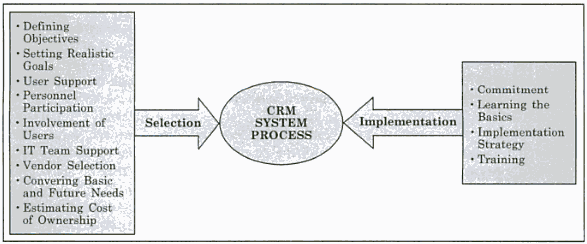
Defining clear objectives
The success of CRM can only be measured if the objectives are clearly defined. This requires a good understanding of the current business processes and the critical issues. The objectives of the CRM should target these issues.
Setting realistic goals
It is essential to set realistic goals to avoid disappointments later. This goal setting process is influenced by “efficiency of employees in using technologies, effectiveness of current systems and processes, and excellent performance of the management”.
User support of CRM
Without the support of the users, implementing any system would not help bring about any improvement. The ultimate control of the effectiveness of CRM lies in the hands of these users. Hence, it is essential that the goals of both the management and the employees are the same to ensure CRM success.
Personnel participation
Personal participation by management in the selection and implementation process instead of delegating their responsibilities helps their subordinates understand the value and importance of CRM for the management and also helps them perceive that they are fully committed to it.
Involvement of users
Users often fear that the CRM will be used to appraise them and that it may end up creating a negative outcome for them. It is essential to ensure that the users understand that CRM will not only help improve their efficiency but also help other team members to enhance their effectiveness.
Support of IT team
While the requirements of a CRM system come from various business units that are going to utilize the CRM, the system requirements as in hardware required, technical capabilities and limitations need to be assessed by the IT team. This is due to the fact that many users will be accessing the CRM all through the day and ensuring that the CRM system works efficiently and without issues is essential. Hence, the IT team need to be involved to ensure that the right CRM system is selected as per the requirements of the organization.
Vendor selection
Ensure that the selected vendor has a reputation in the market that is they have successfully provided efficient CRM systems that are in use in the industry. Ensure co-ordination and communication with the vendor during the implementation. Pre and post sales service should be another criterion when selecting the vendor.
Covering basic needs and desired future needs
“An effective CRM must be simple and intuitive so that the basic users are not overwhelmed, but it must also have upward functional flexibility for catering to the more advanced users”.
Estimating the total cost of ownership
Many CRM implementations have been disappointing due to unplanned cost escalations. Hence, it is essential to understand the costs that are associated with maintenance (modification/customization), and integration as applicable. The organization should spend time evaluating as many systems as possible to determine the best one for them.
Required commitment for CRM implementation
The implementation of the CRM system is harder than selecting one. It is essential to maintain and demonstrate commitment to CRM by making it a part of the organizational culture. It is also essential to ensure that the customers are involved.
Implementing and learning the basics first
Establish short-term, medium-term and long-term goals. Ensure that the users are aware of how to use the system. It is essential that these baby steps are taken in implementing and learning the basics first so that the users can begin using the system efficiently and bring about a return on investment as soon as possible.
Outlining an implementation strategy
How will the system be rolled out to the users? Will it be rolled out to all users at once, or will the system be installed on machines of some user groups only? Will there be a pilot? It is essential that an effective roll out plan is prepared in conjunction with the vendor to ensure that the system gets installed on user machines as soon as possible while minimizing disruption to routine work. This may require understanding if there is a peak time for a particular group so that the roll out for such users is not carried out during that period.
Training the users
If the users do not know what functionality can be accessed from where and how, there will be chaos and they will not be able to use the system effectively. It is therefore essential to ensure that the users are trained on the CRM system and that they are well aware of how to access the main functions they need on a regular basis.
Knowledge Management and CRM
One of the critical enablers for a successful CRM initiative is possessing knowledge management capabilities. With the organizations attempting to store, retrieve and reuse their body of knowledge including best practices and intellectual assets, it is obvious that knowledge management activities have increased.
To ensure that there is no confusion between data, information and knowledge, Vance provides their definitions as: Information is data interpreted meaningfully while knowledge is authenticated information. Knowledge is a reasonable individual belief that increases that individual’s capacity to take effective action. Knowledge management is systematic and organization specific processes for acquiring, organizing and communicating knowledge (implicit as well as explicit) to improve effectiveness and productivity.
CRM processes are knowledge-oriented processes. Knowledge flows in the CRM can be divided into three categories – knowledge for customers, knowledge about customers and knowledge from customers. One of the greatest challenges of CRM is managing this knowledge.
Knowledge management capabilities in the CRM context is the ability of an organization to capture, manage and provide real time authenticated information so as to be able to improve client response and quick decision making.
It is noteworthy that during 2000 Q2, Microsoft’s market value was $600 billion as compared to book value of $45 billion and the huge difference is attributed to their knowledge management capabilities.
Measuring CRM Success
Effective management of CRM is only possible if one measures. In order to measure CRM success, it is essential that clear, well-defined objectives were set prior to CRM implementation so that there is a base against which to compare the measurements. There are many different measurement frameworks possible depending on the organizational requirements such as those focused on performance of sales, marketing, service centre, field service, web site, etc. and another set of measurement frameworks focusing on customers. Since each of the functions like sales, marketing, web site etc. have different needs and requirements, their customer-facing activities differ and hence, the measurements as well.
Nykamp and McEachern recommend establishing universal metrics in order to understand whether the CRM initiatives in an organization re working or not. To start with, as they recommend, tie objectives with project improvements in customer acquisition, retention, reactivation and penetration and then linking them to revenue, costs and competitive differentiation which are then linked to universal metrics. A customer scorecard is one of the ways to reflect these measurements. Some of the typical metrics that could be included in the scorecard are described in brief below:
- Current spending of the customer
- Customer profitability which is “the value f the total customer relationship across all product lines, after netting out the cost of servicing”
- Customer lifetime value or LTV
- Market penetration identifies the percentage of high-value customers
- Cross-sell is the number of different categories of products
- Product penetration is the proportion of clients per segment that have bought products from each category
- Customer retention per segment
- Customer reactivation
- Channel usage or penetration tracks number and types of marketing channels used.
These metrics can be used to gauge CRM initiative success with respect to the objectives set. Also, regularly calculating and recording these metrics helps in monitoring and controlling thereby increasing the efficiency of CRM.
Mckim and Hughes provide a way to measure CRM effectiveness in acquisitions:
- Find a control group to measure it against (e.g. mass marketing)
- Create segments of your existing customers and determine their lifetime value. Learn about their lifestyles, purchase patterns and preferences.
- Find prospect groups that match the profile of your customer groups.
- Develop customized communications for each of the prospect groups.
- Measure the results of your acquisition test, comparing your control group with your test groups, to determine the return on investment.
Since the focus of this dissertation is more on marketing, some marketing metrics that could possibly be used to measure the marketing effectiveness are:
- Reach: Potential clients reached by the campaign
- Response rates: Percentage of total population targeted by the campaign who responded to the campaign
- Recency, Frequency, Monetary (RFM) value: This is a weighted score based on a combination of recent purchases, frequency of that type of purchase, monetary value of purchase
- Conversion rates: Percentage of total campaign population that made a purchase or participated in an activity due to the campaign
- Customer acquisitions costs: Money spent on customer acquisition
- Average customer interaction costs: Total cost for client interaction as part of a campaign by total number of interactions
- Attrition or churn: Frequency of clients terminating the relationship
- Share of wallet, share of requirements: How much does a customer spend on a particular product with an organization as compared to his total budget for purchasing
- Average order size: Average amount per order for a customer
- Category involvement: Amount of money spent by a customer on a particular product category.
The metrics listed above help analyze the effectiveness of EMA. Measuring these metrics will help an organization understand whether a marketing campaign is meeting its targets. If not, taking measures to control them and thereby increasing the effectiveness of the tool.
Summary
CRM is the strategic use of people, processes and technology in the right mix to manage relationship with the customer. Web-based CRM or CRM based on any electronic media is known as e-CRM. EMA is a part of CRM that is oriented towards automating marketing.
Customers today expect timely and accurate information, prompt responses and customized products, services or other offers. Customers today expect an organization to maintain a healthy relationship with them. It is also this relationship that often functions as a competitive differentiator as compared to the offerings of the organization. However, there is no agreement on this as there are authors who believe that in spite of sharing great relationship with a client, price may still be a decisive factor.
With changing customer expectations, it is important to understand a customer, without which an organization would not be able to meet customer expectations, attract and retain clients, improve products, identify marketing opportunities, maximizing business performance, etc. A CRM helps understand a customer better by providing all information regarding the customer at your finger tips.
Increased margins, low cost, time savings, complaint management, customer tracking, 24/7 availability, etc. are some of the benefits of using an e-CRM in an organization.
Operational, analytical and collaborative are three different components of CRM. Operational component supports the front office while analytical component analyzes the data obtained from operational component. Collaborative component assists in interaction with the client in various forms.
EMA seeks to automate and empower marketing team. EMA focuses on customer-centric marketing plans instead of product-centric marketing plans in mass marketing. The customer information is captured through various touch points and the information thus obtained is used to create effective one-to-one plans.
A good and effective e-CRM ensures client optimization in terms of acquisition, expansion and retention. It is important to understand that e-CRM is not just about automating sales, marketing and service processes to increase their efficiency. It is about conducting more informed interactions with clients and tailoring these processes to meet each client’s needs.
The 10-step approach to creating a successful CRM strategy starts with developing an executive CRM vision, followed by targeting the critical issues of business, identifying opportunities for CRM technology, identifying people issues, developing a technical architecture plan, understanding business processes, understand customer needs, providing recommendations, recommending CRM implementation as a program and finally preparing the business case for CRM.
Selecting and implementing CRM in the right manner is very crucial to ensure its success. Bala and Vasan recommend defining objectives, setting realistic goals, user support, personnel participation, user involvement, and support of IT team, vendor selection, covering basic and future needs and estimating the correct cost of ownership. The implementation process involves commitment, implementing and learning the basics, preparing an implementation strategy and appropriate training of the system.
Knowledge Management in the context of CRM is the ability of an organization to capture, manage and provide real time authenticated information so as to be able to improve client response and quick decision making. Knowledge flows in CRM can be divided into three categories – Knowledge for customers, knowledge about customers and knowledge from customers.
Various metrics for measuring and therefore, monitoring and controlling the efficiency of CRM are discussed.
Research Methodology
Introduction
The research methodology chosen for conducting this research is explained in detail in this section. The research methods and instruments chosen are explained as well as justification is provided for the choice. The researcher intends to explain the approach adopted in the research in sufficient detail as to enable another researcher to replicate the research if essential. In order to assist in this, the researcher provides details on the data collection methods used, the research (questionnaire) design, selection of sample population and data analysis techniques.
Methodology Selection and Justification
The research methodology used in any research helps establish the fundamental boundaries of that research serving as a measure of the overall research credibility. Since the research methodology chosen determines the nature of the data that will be used in the research, the sources of the data, how the data will be gathered (instruments to be used) as well the method for analyzing the data, this degree of significance is obvious.
Survey of Literature
For this research, the research methodologies are chosen to facilitate the determination of the scope of the research. This is done by conducting a research study by creating a strong foundation through research conducted previously on this subject. The outcome of this study will form the literature review of the research.
This secondary research that incorporates a literature review will provide a comprehensive account of the views of authors on CRM, e-CRM, EMA, and monitoring, controlling and improving the efficiency of these tools. In this regard, the literature review will help the researcher to establish the themes, the degrees and the gradients that will be used during the primary research in the next stage of the research.
The sources that will be used for conducting the secondary research (literature review) are books, journal articles, and peer reviewed publications. This will ensure the credibility of the literature review. While web sites will be used as sources, care will be taken to ensure their credibility before using the information from the web sites.
In order to ensure that the most updated information on the subject are reviewed, care will be taken to use books, journal articles and peer reviewed publications published after the year 2000. This does not mean that information that seems to be still relevant but published before the year 2000 will not be used; however, due care will be taken to ensure that only that information which is still relevant and useful is used.
A structured literature review will be conducted in order to help with the research. The literature review will also help confirm research questions already created and formulate new ones or modify existing ones if required. The process for conducting structured literature review involves:
- Scanning all books, leading journals and electronic databases with the help of relevant keywords and finding articles relevant to the research topic. This step also involves scanning of the table of contents or index in order to find out new keywords that were not used originally but which are relevant and can help find more relevant information.
- Sifting through all the information and setting aside those that are relevant to the research topic.
- Go through the references and citations noted in the books and articles (as found and shortlisted in steps 1 and 2) and find them. Sift through these as well and shortlist.
- The final step involves finding those books and articles that have cited the shortlisted books and articles in above steps using the internet. Again, sift through the information and set aside the relevant ones.
For the first step, the following keywords were used with Google, Google Scholar search engine and University e-library to search for the first set of books and articles:
- CRM
- EMA
- Enterprise Marketing Automation
- “Enterprise Marketing Automation”
- e-CRM
- e-CRM EMA
- e-CRM efficiency
- e-CRM success factors
- e-CRM implementation
- e-CRM selection
- EMA efficiency
- EMA success factors
- EMA implementation
- EMA selection
These keywords helped find many relevant journals, magazines, and books. The citations and references in these articles and books were used to enhance the database of information that was already gathered.
Again, Google and Google Scholar search engines helped find articles and books that cited the already found ones. These were also reviewed and relevant ones added to the database of information.
On completing the literature review, the research moved on to the accumulation of primary data.
Survey
There are several different methods commonly used in business and management research.
Bryman and Bell define qualitative research as a research methodology that usually tends to be concerned with words or images instead of numbers in the data collection and analysis. However, the problem with qualitative research methodology is the sheer quantity of data that is generated and that must not only be analyzed but also linked back to various theory models.
A quantitative approach is considered complementary to the qualitative approach. Veal defines the quantitative methodology as an “approach to research involves the gathering and analysis of numerical data. It relies on numerical evidence to draw conclusions or to test hypotheses.” Quantitative research consists of structured, standardized, and abstracted modes of data collection and analysis. According to Jankowicz, quantitative approach is characterized by:
- Involving you in concentrated attention on a limited number of variables and constants which are important to you and which are usually expressed in the language of your own investigation.
- A search for the significance of relative proportions, in order to identify what is more important or significant and what is less so n the issue which you are exploring.
- An attempt to understand the ways in which selected factors in a situation are structured or interrelated, in importance or precedence.
- Abstraction from repeated single observations, in which the meaning or significance of data arises from some aggregation, average, range, or comparison rather than from the individual data, points themselves.
Since quantitative methodology is more structured and utilizes numbers to analyze data, it is preferred over qualitative due to time constraints. The research instrument to be used is a survey questionnaire. Easy to use, possibility of quick response, less time-consuming, ability to fill it up as per time convenience, less expensive, less resource requirements, etc. are some of the advantages of a survey over other methodologies.
Since there is a possibility of respondent bias in the responses, and due to time limitations, the primary research findings will be complemented through case studies. This will provide a holistic view and help understand how enterprise marketing automation can assist in organization in serving its customers better.
Case Studies
Saunders and others define the case study research method as a, “research strategy that involves the empirical investigation of a particular contemporary phenomenon within its real-life context, using multiple sources of evidence”. The case study research strategy is used to measure “a single instance of some broader class of phenomena in order to generate a rich and complex understanding of it”. Case studies help in the identification of various factors that are involved in an in-depth study of some aspect of an organisation (or perhaps a single unit within an organization). The chosen case may be at any level of analysis, which could range from the individual and department to the organisation, industry, country, and so on.
The major advantage of using the case study methodology in a research is that being more comprehensive than other methods it is able to provide a holistic view on the research topic. It leads the researcher to describe and analyse the full richness and variety of events and issues in the chosen organisation in question.
However, the main issues with a case study methodology as emphasized by Jankowicz are:
- day-to-day events can not only interrupt the research but also influence its outcome
- Multiple sources of evidence are required to be checked in order to confirm the initial conclusions
- As more and more information is obtained, it increases the database and makes it difficult to manage and maintain it
- An inferential chain needs to be constructed using the database to provide evidence and arrive at final conclusion for the research.
Use of case study as secondary data could not only save time and money, but also provide with suitable methods or data to deal with particular research problems while helping the researcher in formulating and understanding the research problem better. However, it is essential to be careful to use secondary data because of the validity and reliability of information, personal bias and availability of data.
Survey
Samplig
Target population: The target population for this research is represented by the sales and marketing team members that have experience with CRM.
Sampling method: The method of simple random sampling was used in order to determine the size of the sampling unit which gives an equal chance to all participants of the survey. Also, the researcher looked out for respondents that he could easily access thereby making use of the convenience sampling method.
Using contact details from online and print copies of Business Directories, 189 sales and marketing teams were contacted to check if they would be interested in participating in this research study by filling up a survey questionnaire. Care was taken to ensure that the selected 189 people were from diverse industries.
Mode of communication: Since the sample population was not necessarily within the location limits of the researcher, the mode of communication was chosen as emails. Emails can be used for quick communication and are fairly easy to use. Emails were used for dual purposes, first for seeking approval for participation in the research and second for sending across the survey questionnaire to those who responded.
Determination of sample size: The sample size was determined based on time, affordability, and feedback from experts from the sales and marketing field.
The formulae for sample size is:
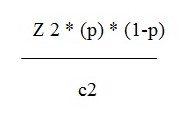
Where:
- Z = Z value (e.g. 1.85 for 85% confidence level)
- p = Percentage of choice for sample size needed, expressed as decimal (0.5 used for sample size needed)
- c = confidence interval, expressed as decimal (e.g.,.08 = ±8)
With a population assumption of 5,000,000, confidence level at 95%, confidence interval level at 8%, the sample size turns out to be 150.
Emails usually get a low response rate since they can be considered as spam and deleted and hence, 189 emails were sent in order to get a good response rate.
Sample Consent and Response: An email was sent out to each of the person identified in the sample population including a detailed description of the purpose of the research to be conducted and requesting their consent to participate. However, considering the fact that spam filters often filter out emails from unknown contacts as junk mail or spam, 189 people were identified to ensure a good response.
Of the 189 people, 165 consented to participate in the research. On sending the questionnaire, 153 people sent across the questionnaire filled with responses within the duration specified. Their responses were then checked to ensure that there was no invalid response. Such questionnaires were rejected. There were only 4 questionnaires that were rejected due to invalid responses. Overall, therefore, there were 149 responses that could be used in the analysis.
Data Collection Method
The questionnaire for the survey was sent via email and the response was also received by email. The responses from the questionnaire were entered in and compiled using Microsoft Excel spreadsheet. Data analysis was carried out using the spreadsheet, statistical analysis and graphs.
Questionnaire Design
The questionnaire is divided into six sections. The first section is intended to collect information regarding the respondents so as to be able to understand the sample population. This section includes questions on the respondents’ industry, job titles, experience and number of employees in the organization (overall and specifically in the marketing department).
The next section consists of general questions on CRM to understand the status of the same in the organization, perceived use of CRM, at what level it is executed and finally the challenges faced currently.
The third section consists of questions on the financial aspects of CRM trying to understand the budget intentions for CRM, the spending priorities for CRM components, and financial effort on training.
The fourth section discusses the objectives and goals of CRM, the success factors, benefits, and reasons for usage of CRM.
The fifth section discusses the monitoring and controlling aspects of CRM. This includes performance measurement and customization capability of the CRM system used by the organizations.
The final section discusses the results of implementing CRM with respect to some common metrics related to marketing campaign.
The questionnaire design was prepared with the help of past CRM surveys conducted using what was relevant and adding new questions to suit this research study.
Before sending out the questionnaire to the sample population, it was validated with the help of a pilot test. To do this, the questionnaire was sent across to at least five of the people who had consented to participate in the survey along with a few friends before sending across to all. The feedback received from these people was incorporated in the questionnaire to ensure that the questionnaire was free of ambiguity and consisted of clear, well-defined questions.
Questionnaire analysis methods
The data analysis of the responses obtained through the questionnaire would be done through descriptive statistical analysis (frequency and relative frequency). Since the data is analyzed using MS Excel spreadsheets, charts and graphs could be easily created to aid the statistical description.
Case Studies
Selection of case
The case studies will be selected on the basis of their relevance to the subject. Organizations who had implemented e-CRM and/or EMA and have successfully been able to benefit from this were selected from inclusion in this research study.
Based on the above guidelines, three case studies were utilized. These included CRM/EMA implementation case studies for UK chemist Boots and Tesco. Recommendations from these case studies were provided
Data collection
The case studies were obtained by searching on the internet and university library and judging them against the criteria provided in earlier section.
Case Analysis methods
Since the case study research is based on limited documents, the data for analysis remains limited to that provided in those documents. However, there are elements in the case study that highlight the best practices recommended by authors in the literature review or found in surveys (both primary and secondary).
Limitations of the study
The survey had the following limitations:
- There were limited questions, especially open-ended questions; hence limited information would be obtained from the survey.
- It is difficult to evaluate the quality of the responses.
- Response rates of surveys are usually low.
- Since the participants were not within researcher location limits, it was not possible to explain the research study to all participants in person. The participants have therefore responded based on their understanding of the research and misunderstandings could have rendered different responses in the survey.
The case study had the following limitations:
- The case study was limited to the documents available and hence, information and data analysis was limited to the documents provided.
- The case studies were not limited by their recency in application.
Another limitation is the subjectivity of the researcher – this applies when the researcher selected the sample population as well as when the data analysis was conducted and reported.
Summary
This section provided detailed description of the research methodology and design that would be used in the research. The process followed by the researcher in order to conduct a survey and the case studies was also discussed in detail. Overall, 149 valid responses have been received, email was used as mode of communication and data analysis would be carried out with the help of MS Excel and using statistical descriptions. Case studies were limited to the documents available but ones that provided insight into the application of CRM/EMA and the resulting benefits. The limitations applicable to the research were also highlighted.
Findings and Discussion
Introduction
The findings and discussion section starts with the case studies of UK companies Boots and Tesco followed by a description of the sample population by industry, job titles, experience and number of employees. This is followed by findings and discussion on general CRM information, financial aspects, objectives and success factors, monitoring and controlling of CRM and finally, the results of CRM. The section is closed with a brief summary of the findings.
Case Studies
Boots
Introduction
Boots is a UK chemist that sells health and beauty products including pharmacy services, baby, diet, fitness and hair products, etc. This case study is based on the document provided in Appendix B.
In 1997, Boots introduced its Advantage Loyalty program along with the creation of a database. With an investment of around £25 million, Boots implemented its program with the help of IBM. However, the database was built in-house so as to enable them to conduct analysis in the future with ease. The database took about 6 months to build and gathered about 1.6 TB of customer data.
Technology
The Customer Data Analysis System (CDAS) was created by Boots in order to manage and maintain their customer data. The software sits on an SP/2 platform running under IBM’s DB/2 UDB database under AIX. Even with large amount of data, most queries take a few minutes to run. The reasonable response time for even the highly complex queries was appreciated by all. The current tool set includes MicroStrategy’s DSS Agent and Andyne’s GQL which are used for the bulk of queries – with IBM’s Intelligent Miner for Data being used for more advanced data mining such as segmentation and predictive modelling. A campaign management component was integrated within CDAS with the help of IBM.
Results
- Exceeded the target of signing up eight million card holders during the first year as well as their original estimate of 10 million card holders by December 1998.
-
- Growing customer database that helps in analyzing their purchase patterns.
- Ability to analyze groups of customers to study their purchasing patterns especially with respect to marketing activities such as promotional offers and divide them into groups like deal seekers (who only buy products on promotional offer), stockpilers (who buy goods on offer in bulk but do not purchase otherwise), loyalists (whose purchasing increases during promotional offers but soon gets back to normal purchasing activities) and the new market (those who start purchasing during a promotional offer but continue to purchase post that). This helped them understand how effective their marketing campaign was. Also, it helped them understand the linking between products – it was through the data analysis that they realized that customers buying baby products also wanted to buy picture frames. This information was used to create special offers linking the two thereby increasing sales.
- Integration of campaign management system with CDAS allowed direct creation of target customer profiles, mailing list for a particular marketing campaign and measurement of the basic campaign response analysis.
Best Practices
- Understand what your customers really want. The loyalty program offered rewards by letting people buy items that they would normally not buy for themselves instead of allowing them to redeem their rewards by buying basic essentials.
- Understand what you want to achieve and implement a pilot to understand whether you are on the right track or not and then go for the complete roll-out. A rigorous two-year research program including lengthy trial phase was conducted before the Advantage Loyalty program was rolled out all over the country.
- Performance of the system/marketing activities should be measured through metrics such as RFM (Recency, Frequency, and Monetary) value, lifestage (life time value) analysis, and customer attitudes to understand the effectiveness of the marketing campaigns and the CRM system.
- Focus on collecting customer data and use it for analysis so as to be able to get customer insights across the business.
- Continuous customer data collection and data analysis needs to be carried out to improve CRM/EMA system and marketing effectiveness and use performance metrics to gauge where improvements are required.
Tesco
Introduction
Tesco is UK’s leading food retail group selling full range of groceries and providing home delivery throughout UK. This case study is based on the document provided in Appendix C.
Enterprise Marketing Automation in Tesco
Tesco sells non-food ranges such as books, electronic items, DVDs, etc. along with the food range through its online Tesco.com site. Their marketing strategy is firstly divided based on their core food products v/s the non-food range. In-store advertising and marketing is used to persuade Clubcard loyalty scheme’s customers to shop online. On the other hand, online advertisements using keyword targeted ads were used for all non-food range.
Using a commitment-based segmentation or loyalty ladder based on RFM metrics, Tesco.com has defined their customer lifecycle as consisting of six phases – Logged-on, Cautionary, Developing, Established, Dedicated and Logged-off. Their automated system understands what stage a customer is at and accordingly sends out event-based messages that encourage customers to continue purchasing at Tesco.com.
For example, a customer is considered as Logged-on if he has visited the web site. In case the customer has not made any purchase, an email is automatically sent across to persuade them to purchase with a discount offering along with phone assistance. After their first online purchase, email notification is sent immediately regarding the purchase and continuous communication is maintained offering them discounts and various offers along with monthly e-newsletter and coupons. When the customer does not make any purchase for a long time, he is “logged-off” and is provided with further encouragement to purchase with discount offers.
Results
Online sales have seen a rise of 31% year-on-year increase along with a 37% increase in profit receiving 170,000 orders each week by September 2005. According to a compilation from Hitwise, Tesco was leading with 27.28% market share in 2005.
Best Practices
- Understand what marketing strategy works for which type of products. Tesco used in-store advertising for food ranges and online advertising for non-food ranges.
- Define your customer life cycle objectively and incorporate it in your EMA system so as to allow the system to automatically identify the various phases of customer life cycle and use it to promote sales.
- Understand when your customer has become dormant and encourage them to purchase through various means such as discount offers, incentives, etc.
- Use performance metrics like RFM and life cycle value to improve your marketing strategies.
Sample Population
Sample Population by Industry
As shown in figure 2, the respondents were from a wide variety of industries. This was done deliberately to ensure that the results were not specific to any particular industry. The vertical sectors did not have equal number of respondents due to the low response rates. The top four industries viz. Manufacturing, Services, Financial Services and Retail represented more than 60% of the respondents.
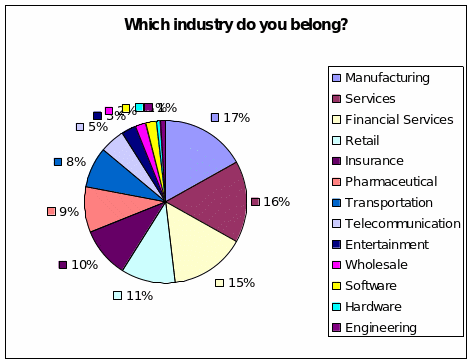
Table 1: Data table for Question ‘ Which industry do you belong?
Sample Population by Job Title
More than 50% of the respondents were in senior positions such as CEO, President, Vice President or Director. Since CRM is considered as a strategic initiative, the respondents in senior positions are most likely to have a good understanding of the CRM initiative in their organization. The other half of the respondents were from junior positions or middle management who actually use the CRM system as part of their regular activities. This will help get a balanced view of CRM.
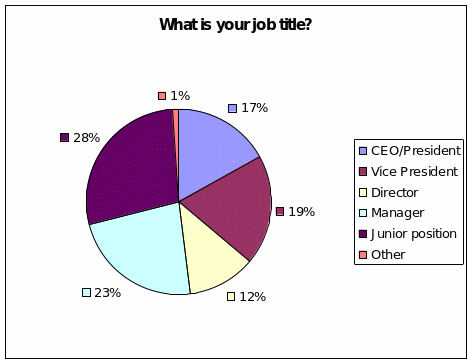
Table 2: Data table for Question ‘ What is your job title?
Sample Population by experience within organization
As indicated in figure 4, the experience of the respondents within the organization was also diverse with maximum people (41%) having up to 5 years of experience in the organization. Almost half the respondents had more than 10 years of experience within the same organization. More experience within the same organization ensures that the respondents’ knowledge of CRM in the organization is quite high.
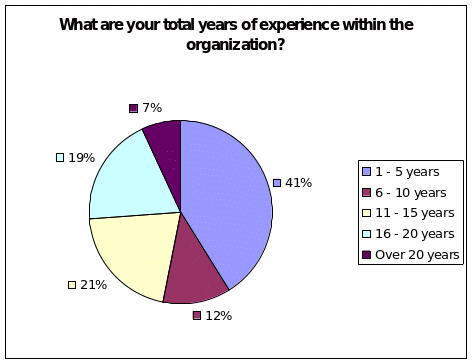
Table 3: Data table for Question ‘ What are your total years of experience within the organization?
Sample Population by employee strength
The smallest organization consisted of less than 100 employees while the largest organization had more than 10000 employees (see figure 5). Also, the number of employees in the marketing team ranged from less than 10 to more than 500 in an organization. This shows that the respondents belonged to organizations that not only from different vertical sectors but also differed significantly in size.

Table 4: Data table for Question ‘ What is the strength (number of employees) of the organization?’
Different ratios were calculated like number of employees/number of marketing team members, number of marketing team members/employee, number of employees/marketing team member, etc. The ratio of employees/marketing team member varied significantly depending on the organization size as well as the vertical sector it came from. This ratio was higher for the manufacturing, retail and wholesale industry as compared to others.

Table 5: Data table for Question ‘ What is the strength (number of employees) of the marketing team in the organization?
General Questions on CRM
Overall Status of CRM implementation
More than 52% of the respondents claimed that their CRM initiative was completed while another 28% said that the implementation was in progress. 15% of the respondents claimed that the CRM was being planned for the future. Only 1% had not planned to implement CRM so far. It is also noteworthy that many respondents made comments that they were not sure about which option to pick since CRM implementation was a continuous process – many had one part of CRM implemented and were proceeding to implement the next part. This shows that while CRM has been introduced in many of these organizations, organizations continue to put effort into enhancing it further.

Table 6: Data table for Question ‘ What is the status of implementation of CRM initiatives?
Perception of CRM (classified by tool type)
A majority 62% of the respondents consider CRM mostly as a tool for operational support instead of being a strategic instrument (14%). This indicates that CRM is still not perceived as a strategy but rather for supporting the operations. Also, 21% of the respondents considered the usage of CRM for analytical purposes.
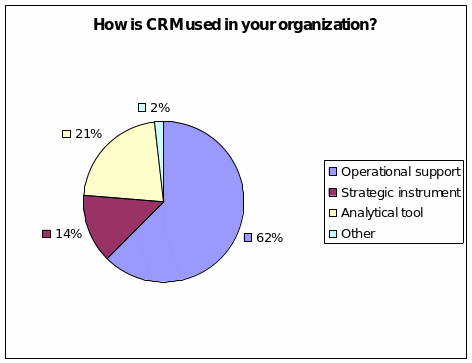
Table 7: Data table for Question ‘ How is CRM used in your organization?
Execution of CRM
CRM initiatives are executed at an enterprise-wide level as per 36% of the respondents. The majority (58%) of respondents claimed that CRM implementation is carried out on a divisional or channel-specific level. Only 5% of the respondents claimed that the CRM implementation was carried out as single projects.

Table 8: Data table for Question ‘ How are CRM initiatives carried out within your organization?
Challenges faced in CRM implementation
The biggest challenges faced in current CRM implementation are enterprise-wide integration (77%), enhancement of customer value (68%), and customer data management (62%). Performance measurement was also a challenging issue according to more than half the respondents (52%). Customer segmentation (34%) and systems integration (31%) are almost at same level but have much lower priority than others.

Table 9: Data table for Question ‘ What challenges are you facing in your current CRM implementation?
Financial aspects of CRM
Budget intentions for CRM initiatives
While only 3% of the organizations have plans to decrease the budget for CRM initiatives by more than 10%, 39% intend to reduce the budget by up to 10%. 26% of the respondents see no change in the budget for the upcoming year. However, 31% of the respondents intend to increase their budget. The researcher considers current recession as the main reason for these decisions. So while some organizations seek to reduce their investment during the recession, others see a need for more focused marketing or one-to-one marketing and hence, are putting in more money in their CRM initiatives.

Table 10: Data table for Question ‘ What are the budget plans for CRM for upcoming year?
CRM spending priorities
Majority of respondents (63%) consider operational CRM as the top priority and where the maximum CRM budget will be going. Considering that operational CRM consists of SFA, EMA and CSS, the front-end applications, this choice seems obvious.
This was followed by analytical CRM (36%) indicating that organizations intend to move on to analyzing data rather than just getting accurate information at the right time.
Collaborative CRM received the least priority at 1%.
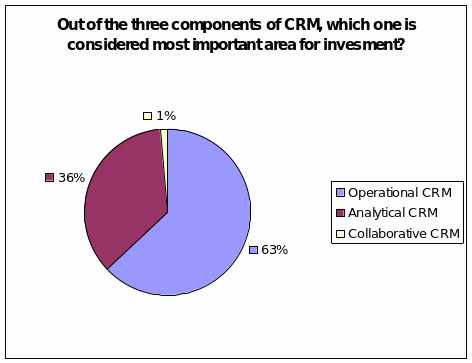
Table 11: Data table for Question ‘ Out of the three components of CRM, which one is considered most important area for investment?’
Training budget of CRM implementation
Majority of the respondents (81%) spent somewhere between 10% and 30% of their CRM budget on training their employees. This was followed by 9% of organizations who spent less than 10% on training. 4% of the respondents claimed that their organizations spent between 30% and 70% of their CRM budget on training. None of the organizations spent more than 70% of their CRM budget on training.
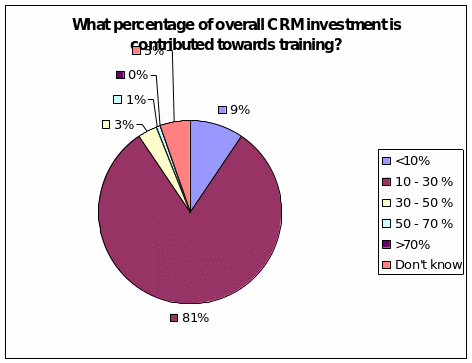
Table 12: Data table for Question ‘ What percentage of overall CRM investment is contributed towards training?
Objectives and Success factors of CRM
Reasons for adopting CRM
Realization of unused potential (64%), access to customer data (46%), efficient sales (43%) and support of existing customer (42%) were amongst the top reasons for adopting CRM. Not surprisingly, acquisition of new customers was rated the lowest voted reason (11%) for using CRM. This is in alignment with literature since acquisition of new customers is far more expensive than retaining an existing customer.
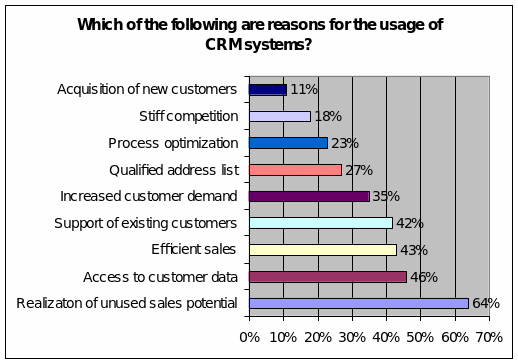
Table 13: Data table for Question ‘ Which of the following are reasons for the usage of CRM systems?
Benefits of CRM implementation
Increased profitability (70%), improved productivity (69%), and shortened cycles (68%) are the top benefits of CRM according to the respondents. These are followed closely by access to new customer channels (64%), reduced operational costs (62%), and competitive advantage (61%).
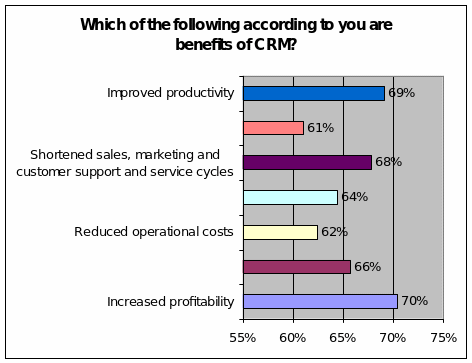
Table 14: Data table for Question ‘ Which of the following according to you are benefits of CRM?
Critical success factors for CRM implementation
There was an almost unanimous response towards top management commitment being the most critical success factor for CRM initiatives with 96% respondents agreeing with it. This was followed by clearly defined CRM processes (79%), change in corporate culture (77%), and significant customer data (74%). ‘Sufficient resources’ was also considered a critical success factor by more than half the respondents (51%).
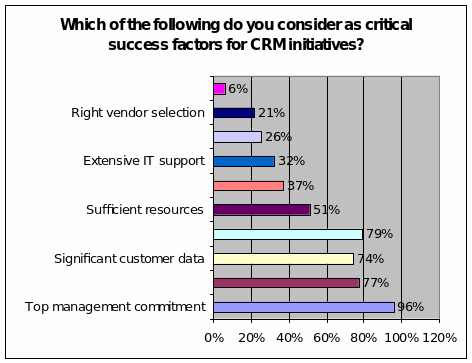
Table 15: Data table for Question ‘ Which of the following do you consider as critical success factors for CRM initiatives?
Motivation of employees
Training (90%) and customer orientation as part of corporate culture (80%) were the two main motivators for employees to participate in the CRM activities. Monetary sanctions (28%) and monetary incentives (23%) were considered motivators by about one-fourth the respondents. This shows the importance and influence of training and corporate culture on employees.
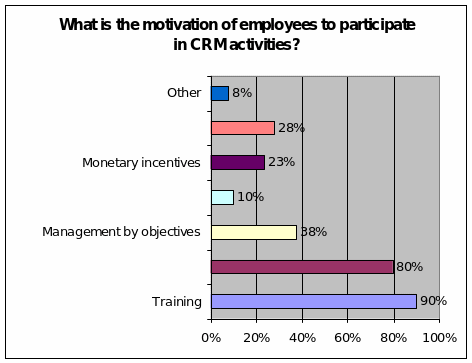
Table 16: Data table for Question ‘ What is the motivation of employees to participate in CRM activities?
Monitoring and Controlling CRM
Performance measurement of CRM implementation
Majority of the organizations (65%) are measuring their performance of CRM initiatives. While another 10% respondents claimed that their organizations are not measuring performance currently, they have plans to do so in the future. However, almost one-forth the respondents claimed that their organizations are not measuring the performance and seem to have no intention of doing so in the future as well.

Table 17: Data table for Question ‘Do you measure the performance of CRM initiatives?
Types of measurement used
Majority of the respondents (79%) claimed that their organization relied on the impact of CRM on financial key figures to measure its performance. Operative key figures were used by 66% of the respondents. This included the measurement of success of a marketing campaign by understanding its reach, response rates, RFM, conversion, etc.
36% of the respondents claimed that their organization relied on general examination of the CRM initiatives instead of having performance metrics to measure.

Table 18: Data table for Question ‘How do you measure the performance of CRM initiatives?
Flexibility of implemented CRM system
Majority of the respondents (67%) claimed that the CRM systems used by their organization is flexible and allows customization to meet frequent changes in requirements and therefore, frequent changes in information required. Of these, only 27% were able to customize the data collection as well as the reports, while the remaining 40% of the respondents were only able to obtain customized reports. 23% of the respondents were not sure if their CRM system allowed for this flexibility and customization while 10% were sure that their CRM system was unable to cope to frequent changes in requirements and information needs.
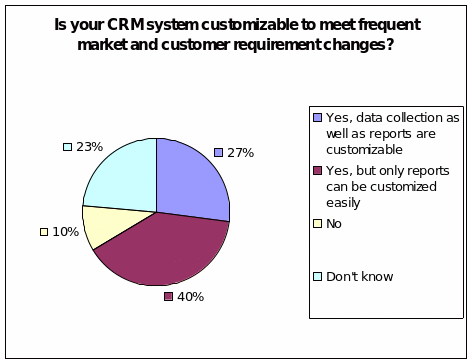
Table 19: Data table for Question ‘Is your CRM system customizable to meet frequent market and customer requirement changes?
Timely information from CRM system
More than four-fifths of the respondents were able to get the required information from their CRM systems; however, only 40% of the respondents claimed that it was provided on time while the others were not too happy with the time factor. Of these 40% respondents, majority had a CRM system that was customizable in terms of both data collection and reports. Also, of the 43% of the respondents who were not happy with the time factor, majority used those CRM systems that either did not allow customization or where only reports could be customized.
17% of the respondents were not satisfied with their CRM system either in terms of providing required information or providing information on time.
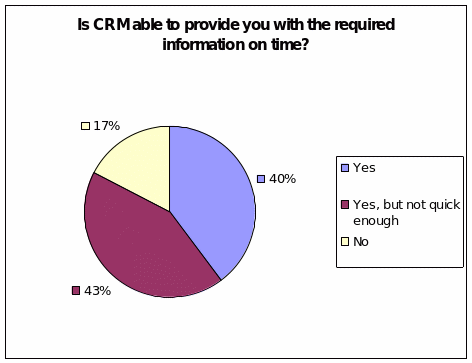
Table 20: Data table for Question ‘Is CRM able to provide you with the required information on time?
Results of implementing CRM
Change in Reach
More than half the respondents observed less than 10% increase in reach followed by 23% of the respondents who observed an increase of 10% to 15% in reach of their marketing campaigns. This can be understood by the fact that the idea behind having a marketing campaign through CRM is to improve quality of target population (so that the response rate and conversion rate improve) rather than increase its numbers.
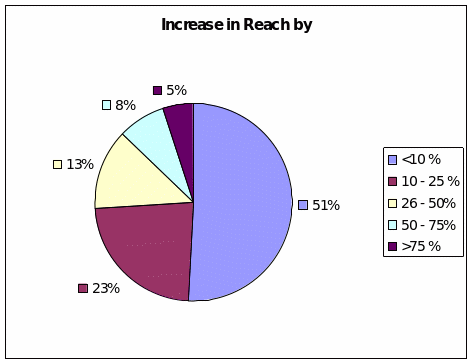
Table 21: Survey – Data table for Question ‘Increase in Reach by’
Change in Response Rates
Majority of the respondents (64%) observed an increase in response rate by 50% to 75%followed by 12% of the respondents who observed an increase in response rate by 26% to 50%. This shows that the marketing campaign was targeting the right people and hence better response rate was obtained.
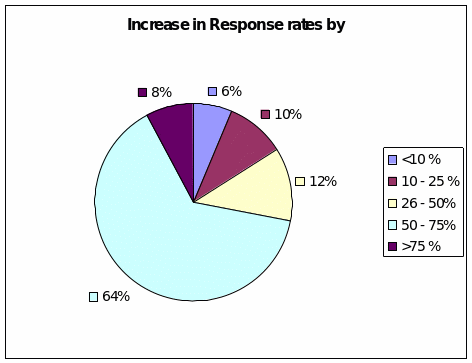
Table 22: Survey – Data table for Question ‘Increase in Response rates by’
Change in Conversion Rates
Less than half the respondents (48%) observed an increase in conversion rate by 50% to 75%followed by 23% of the respondents who observed an increase in response rate by 26% to 50%. Not all people who respond to a marketing campaign get converted into clients and make a purchase. Hence, the increase in conversion rates is less as compared to increase in response rate.
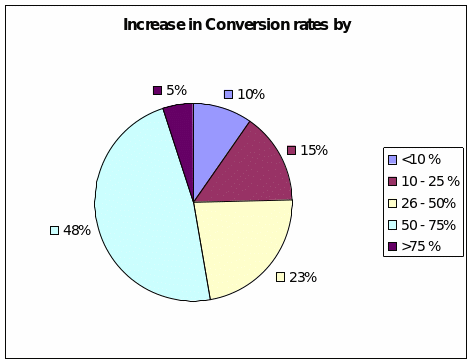
Table 23: Survey – Data table for Question ‘Increase in Conversion rates by’
Change in Customer Acquisition Costs
Majority of the respondents (58%) saw a reduction in customer acquisition costs by 26% to 50% followed by 18% respondents who saw a reduction in customer acquisition costs by 10 to 25%. Since the internet makes it easier to meet up with potential clients, and reduces the need for face-to-face meetings, the reduction in client acquisition costs seems obvious.

Table 24: Survey – Data table for Question ‘Reduction in Customer acquisition costs by’
Change in Average Customer Interaction Costs
Majority of the respondents (55%) saw a reduction in average customer interaction costs by 26% to 50% followed by 19% respondents who saw a reduction in average customer interaction costs by 10 to 25%. These closely match the reduction in customer acquisition costs for the same reasons – the internet making it easier to meet up online reducing the need for face-to-face meetings and giving other advantages.

Table 25: Survey – Data table for Question ‘Reduction in Average customer interaction costs’
Change in Average Order Size
Majority of the respondents (71%) saw an increase in average order size by 26% to 50% followed by 11% respondents who saw an increase in average order size by 10 to 25%. Since the marketing campaign very carefully targets the right people with the help of CRM, more purchases are made since the products are of their interests.
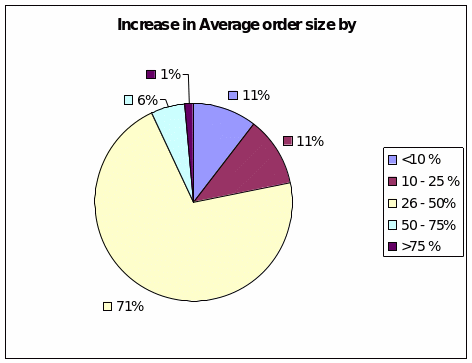
Table 26: Survey – Data table for Question ‘Increase in Average order size by’
Analysis
On analyzing the results of the CRM with other factors, the following observations were made. Better results were obtained when performance was measured. Results were best when performance measurements included a combination of financial and operational key figures, followed by financial key figures alone. Results improved with increase in flexibility and customizability of CRM systems as also with availability of right information within time.
Results were also better for those respondents who considered top management commitment, corporate culture and clearly defined CRM processes as a critical success factor indicating that these success factors could be responsible for improving effectiveness of CRM systems. However, further research is needed to conclude the same.
There seems to be no direct link between the budget intentions and the results. Organizations with better results were a mix with some considering an increase in budget while others considering reducing it. The former could be due to seeing results and wanting more out of CRM while the latter could be due to contention with results obtained. Size of company also had a mixed influence on the results, indicating no correlation between the two.
Training had an influence on the results with organizations spending more than 10% of their CRM budget getting better results than others.
Conclusion
Many major entities have chosen to adopt CRM systems in this modern era of technological advancement and cut-throat competition. There are many people who have faced difficulties in their relationships; such people are finding their way to create a new relationship through virtual world which is considered to be the most completive. The reason is that as new relations are made it is also possible to create new customers for the organization. Many popular organizations such as IBM, Intel and Motorola have also created communities in the virtual world in order use it as second way of advertising. It serves as an online venue for the company to conduct discussions, meeting and share ideas between their customers and prospect customers.
Issue-specific architecture and marketing automation suites will integrate with business performance management. In the wake of corporations evolving over conservative paper-work for accounting and management, the need of the hour is implementation and execution of EMA (enterprise marketing automation) software suites, which, with the help of IT and internet aims at setting up a fast paced market, and convenient transactions with fool-proof policies and standards. By integrating information across the enterprise, customer relationship management business drivers aim at increasing customer acquisition, retention, loyalty and henceforth profit. Moreover, having had to empower staff with customer intelligence considering the use of IT technologies, CRM provides real-time pipeline and forecasting, helping to build on sustainable and economically beneficial relationships.
However, effective internal controls need to be in place to prevent customer information being scattered across futile databases and servers. Besides, architectural security issues may also tend to come up. Nevertheless, simply installing a CRM system like Enterprise marketing automation is only a beginning. Successful implementation and execution is possible only with a carefully defined, organization wide CRM strategy.
This research thus proposes to identify the scope and application of Enterprise marketing automation and e-CRM, and formulating potential ways of increasing their efficiency in business.
CRM is the strategic use of people, processes and technology in the right mix to manage relationship with the customer. Web-based CRM or CRM based on any electronic media is known as e-CRM. EMA is a part of CRM that is oriented towards automating marketing.
Customers today expect timely and accurate information, prompt responses and customized products, services or other offers. Customers today expect an organization to maintain a healthy relationship with them. It is also this relationship that often functions as a competitive differentiator as compared to the offerings of the organization. However, there is no agreement on this as there are authors who believe that in spite of sharing great relationship with a client, price may still be a decisive factor.
With changing customer expectations, it is important to understand a customer, without which an organization would not be able to meet customer expectations, attract and retain clients, improve products, identify marketing opportunities, maximizing business performance, etc. A CRM helps understand a customer better by providing all information regarding the customer at your finger tips.
Increased margins, low cost, time savings, complaint management, customer tracking, 24/7 availability, etc. are some of the benefits of using an e-CRM in an organization.
Operational, analytical and collaborative are three different components of CRM. Operational component supports the front office while analytical component analyzes the data obtained from operational component. Collaborative component assists in interaction with the client in various forms.
EMA seeks to automate and empower marketing team. EMA focuses on customer-centric marketing plans instead of product-centric marketing plans in mass marketing. The customer information is captured through various touch points and the information thus obtained is used to create effective one-to-one plans.
A good and effective e-CRM ensures client optimization in terms of acquisition, expansion and retention. It is important to understand that e-CRM is not just about automating sales, marketing and service processes to increase their efficiency. It is about conducting more informed interactions with clients and tailoring these processes to meet each client’s needs.
The 10-step approach to creating a successful CRM strategy starts with developing an executive CRM vision, followed by targeting the critical issues of business, identifying opportunities for CRM technology, identifying people issues, developing a technical architecture plan, understanding business processes, understand customer needs, providing recommendations, recommending CRM implementation as a program and finally preparing the business case for CRM.
Selecting and implementing CRM in the right manner is very crucial to ensure its success. Bala and Vasan recommend defining objectives, setting realistic goals, user support, personnel participation, user involvement, and support of IT team, vendor selection, covering basic and future needs and estimating the correct cost of ownership. The implementation process involves commitment, implementing and learning the basics, preparing an implementation strategy and appropriate training of the system.
Knowledge Management in the context of CRM is the ability of an organization to capture, manage and provide real time authenticated information so as to be able to improve client response and quick decision making. Knowledge flows in CRM can be divided into three categories – Knowledge for customers, knowledge about customers and knowledge from customers.
Various metrics for measuring and therefore, monitoring and controlling the efficiency of CRM are discussed.
A survey questionnaire was used as a research methodology for conducting this research. The questionnaire designed had six sections. A pilot test was conducted to ensure that the questionnaire was free of ambiguity. Overall, 149 valid responses have been received, email was used as mode of communication and data analysis would be carried out with the help of MS Excel and using statistical descriptions.
The performance metrics related to marketing campaign viz. reach, response rate, conversion rate, customer acquisition rate, average customer interaction costs, and average order size seem to change for the better and are influenced by various factors. These include whether an organization is measuring performance (in terms of financial and operational key figures) and taking steps to correct the issues that arise, whether the CRM system used is customizable and whether it has the ability to provide information that is not only relevant but also provides it on time.
Top management commitment, corporate culture and clearly defined CRM processes were some of the critical success factors that also seem to influence the results; however, further research is needed to conclude the same.
Budget intentions and size of company do not bear a direct influence on the results. Training, however, has an influence on the results with organizations spending more than 10% of their CRM budget getting better results than others.
In general, taking the right implementation steps as outlined in the literature review helps ensure better results – that is developing an executive CRM vision, followed by targeting the critical issues of business, identifying opportunities for CRM technology, identifying people issues, developing a technical architecture plan, understanding business processes, understand customer needs, providing recommendations, recommending CRM implementation as a program and finally preparing the business case for CRM.
Also, measuring performance using different measurement frameworks helps gauge the effectiveness of the CRM system and helps the organization understand what changes are required in order to increase its effectiveness. Therefore, it is recommended that organizations start with a measurement system when initiating CRM so as to be able to measure its effectiveness once implementation is completed.
CRM systems ability to provide relevant information at the right time and flexibility also affect the results. Hence, it is essential to select a CRM system that encompasses these attributes.
Recommendations also include some of the best practices followed by the case companies Boots and Tesco. Understand what your customers really want. Understand what you want to achieve and implement a pilot to understand whether you are on the right track or not and then go for the complete roll-out. Understand what marketing strategy works for which type of products. Define your customer life cycle objectively and incorporate it in your EMA system so as to allow the system to automatically identify the various phases of customer life cycle and use it to promote sales. Understand when your customer has become dormant and encourage them to purchase through various means such as discount offers, incentives, etc. Performance of the system/marketing activities should be measured through metrics such as RFM (Recency, Frequency, and Monetary) value, lifestage (life time value) analysis, and customer attitudes to understand the effectiveness of the marketing campaigns and the CRM system. Focus on collecting customer data and use it for analysis so as to be able to get customer insights across the business. Continuous customer data collection and data analysis needs to be carried out to improve CRM/EMA system and marketing effectiveness and use performance metrics to gauge where improvements are required.
Appendix
Appendix A – Survey Questionnaire
Section I: Description of the Respondent
Which industry do you belong?
- Manufacturing
- Services
- Financial Services
- Retail
- Insurance
- Pharmaceutical
- Transportation
- Telecommunication
- Entertainment
- Wholesale
- Software
- Hardware
- Engineering
What is your job title?
- CEO/President
- Vice President
- Director
- Manager
- Junior position
- Other
What are your total years of experience within the organization?
- 1 – 5 years
- 6 – 10 years
- 11 – 15 years
- 16 – 20 years
- Over 20 years
What is the strength (number of employees) of the organization?
- Less than 100
- 101 – 500
- 501 – 1000
- 1001 – 5000
- 5001 – 10000
- Over 10000
What is the strength (number of employees) of the marketing team in the organization?
- < 10
- 11 – 25
- 26 – 50
- 51 – 100
- 101 – 500
- Over 500
Section II: General questions on CRM
What is the status of implementation of CRM initiatives?
- Completed
- In Progress
- Planned
- Not Planned
- Other
How is CRM used in your organization?
- Operational support
- Strategic instrument
- Analytical tool
- Other
How are CRM initiatives carried out within your organization?
- Enterprise-wide
- Division or channel specific
- Single project
- Other
What challenges are you facing in your current CRM implementation?
- Enterprise-wide integration
- Enhancement of customer value
- Customer data management
- Customer segmentation
- Performance measurement
- Systems integration
Section III: Financial aspects of CRM
What are the budget plans for CRM for upcoming year?
- Increase budget by more than 10%
- Increase budget up to 10%
- No change
- Decrease budget by up to 10%
- Decrease budget by more than 10%
Out of the three components of CRM, which one is considered most important area for investment?
- Operational CRM
- Analytical CRM
- Collaborative CRM
What percentage of overall CRM investment is contributed towards training?
- <10%
- 10 – 30 %
- 30 – 50 %
- 50 – 70 %
- >70%
- Don’t know
Section IV: Objectives and success factors of CRM
Which of the following are reasons for the usage of CRM systems?
- Realization of unused sales potential
- Access to customer data
- Efficient sales
- Support of existing customers
- Increased customer demand
- Qualified address list
- Process optimization
- Stiff competition
- Acquisition of new customers
Which of the following according to you are benefits of CRM?
- Increased profitability
- Competitive advantage
- Reduced operational costs
- Access to new customer channels
- Shortened sales, marketing and customer support and service cycles
- Increased customer loyalty
- Improved productivity
Which of the following do you consider as critical success factors for CRM initiatives?
- Top management commitment
- Change in corporate culture
- Significant customer data
- Clearly defined CRM processes
- Sufficient resources
- Understanding of customer behaviour
- Extensive IT support
- Training
- Right vendor selection
- Other
What is the motivation of employees to participate in CRM activities?
- Training
- Customer orientation as part of corporate culture
- Management by objectives
- No measures
- Monetary incentives
- Monetary sanctions
- Other
Section V: Monitoring and Controlling of CRM
Do you measure the performance of CRM initiatives?
- Yes
- No
- No, but planned
- Don’t know
- Other
Do you measure the performance of CRM initiatives?
- Impact on financial key figures
- Operative key figures
- General examination
- Don’t know
Is your CRM system customizable to meet frequent market and customer requirement changes?
- Yes, data collection as well as reports are customizable
- Yes, but only reports can be customized easily
- No
- Don’t know
Is CRM able to provide you with the required information on time?
- Yes
- Yes, but not quick enough
- No
Section VI: Results of CRM
Please specify the approximate change you have observed in the below mentioned metrics after implementing CRM. In case your CRM implementation is not completed, provide the forecasts in change in these metrics.
Increase in Reach by:
- <10 %
- 10 – 25 %
- 26 – 50%
- 50 – 75%
- >75 %
Increase in Response rates by:
- <10 %
- 10 – 25 %
- 26 – 50%
- 50 – 75%
- >75 %
Increase in Conversion rates by:
- <10 %
- 10 – 25 %
- 26 – 50%
- 50 – 75%
- >75 %
Reduction in Customer acquisition costs by:
- <10 %
- 10 – 25 %
- 26 – 50%
- 50 – 75%
- >75 %
Reduction in Average customer interaction costs:
- <10 %
- 10 – 25 %
- 26 – 50%
- 50 – 75%
- >75 %
Increase in Average order size by:
- <10 %
- 10 – 25 %
- 26 – 50%
- 50 – 75%
- >75 %
Appendix B – Case Study on Boots

Appendix C – Case Study on Tesco

Bibliography
Alavi, M, D Leidner, ‘Knowledge Management Systems: Emerging Views and Practices from the field’, Proceedings of the 32nd Hawaii International Conference on System Sciences, 1999.
Ambert, A, Adler, Adler & F Derzner, ‘Understanding and Evaluating Qualitative Research’, Journal of Marriage and the Family, Vol. 57, Nov, 1995, pp. 879-893.
Bala, MR & M Vasan, ‘CRM system: Selection and implementation’ in S Shanmugasundaram (ed.), Customer Relationship Management: Modern Trends And Perspectives, Prentice-Hall, New Delhi, 2008, pp. 13.
Barsky, NP, & G Marchant, ‘The most valuable resource – measuring and managing intellectual capital’, Strategic Finance,
Battista, P & D Verhun, ‘Customer relationship management: The promise and the reality’, CMA Management, Vol. 74, No. 4, pp. 34-37.
Boujena, O, WJ Johnston, & DR Merunka, ‘THE BENEFITS OF SALES FORCE AUTOMATION: A CUSTOMER’S PERSPECTIVE’ Journal of Personal Selling & Sales Management, Vol. XXIX, No.2, 2009, pp. 137–150
Brown, SM, ‘Searching for effective CRM’, Enterprise Systems Journal, Vol. 15, No. 8, 2000, pp. 40-43.
Bryman, A & E Bell, Business research methods. Oxford University Press Inc., New York, 2007.
Business Intelligence, e-CRM: Customer management strategies for e-business: Improving profitability and sustaining customer relationships through on-line channels, Business Intelligence, 2006, Web.
Butler, S, ‘Changing the game: CRM in the e-world’, The Journal of Business Strategy, Vol. 21, No. 2, 2000, pp. 13-14.
Colgate, MR & PJ Danaher, ‘Implementing a customer relationship strategy: The asymmetric impact of poor versus excellent execution’, Academy of Marketing Science Journal, Vol. 28, No. 3, 2000, pp. 275-387.
Cruz-Cunha, MM, Social, Managerial, and Organizational Dimensions of Enterprise Information Systems, Business Science Reference, PA, 2010, 158.
Day, GS, ‘Managing market relationships’ , Academy of Marketing Science Journal, Vol. 28, No. 1, 2000, pp. 24-30.
Digital Purview, Enterprise marketing automation (EMA), Digital Purview, 2009, Web.
Diorio, SG, Beyond “e”: 12 ways technology is transforming sales and marketing strategy, McGraw-Hell, 2002, pp. 112.
Doyle, S & J Georghiou, ‘Software Review: A process change model to meet the Enterprise Marketing Automation (EMA) vision’, Journal of Database Marketing, Vol. 8, No. 2, 2001, pp. 176.
Eriksson, P & A Kovalainen, Qualitative Methods in Business Research, SAGE Publications Ltd., London, 2008.
Fluss, D, ‘The future of e-service is E-CRM’, Inside Gartner Group, pp. 1-3.
Fusaro, L, ‘From a market of millions to a million markets of one’, Canadian Manager, Vol. 24, No. 4, 1999, pp. 18, 28.
Goddard, W & S Melville, Research Methodology: An Introduction, Juta and Company Limited, 2004.
Goldenberg, BJ, CRM Automation, Prentice Hall, NJ, 2003.
Greco, AJ, ‘Customer relationship management and e-business: more than a software solution’, Review of Business, January, 2003.
Greenberg, P, CRM – Anytime, Anywhere, 2010. Web.
Jankowicz, AD, Business Research Projects, Chapman & Hall, UK, 1995.
Jayakumar, A & C Nagalakshmi, ‘CRM: An Orientation to Knowledge Management’ in S Shanmugasundaram (ed.), Customer Relationship Management: Modern Trends And Perspectives, Prentice-Hall, New Delhi, 2008, pp. 20.
Jiang, H, Application of e-CRM to the Airline Industry, 2010. Web.
Johnson, AM, ‘The customer who would be king’, CIO, Vol. 12, No. 21, pp. 182-186.
Jutla, D, J Craig, & P Bodorik, ‘Enabling and Measuring Electronic Customer Relationship Management Readiness’, Proceedings of the 34th Hawaii International Conference on System Sciences, 2001.
Kellen, V, CRM Measurement Frameworks, 2010, Web.
Ketchen, DJ & DD Bergh, Research methodology in strategy and management, Emerald Group Publishing, 2004.
Khera, M, The evolution of CRM & the challenges of personalized E-support: Evolution of customer relationship management, Web.
Kincaid, JW, Customer Relationship Management: Getting it Right!, Prentice-Hall PTR, NJ, 2003, pp. 41.
Kornak, A, J Teutloff, & M Welin-Berger, Enterprise Guide To Gaining Business Value From Mobile Technologies, Wiley Publishing, Inc., Hoboken, 2004
Kothari, CR, Research Methodology: Methods & Techniques, New Age International, 2005.
Ledingham, D, M Kovac, & HL Simon, ‘The new science of sales force productivity’, Harvard Business Review, Vol. 84, No. 9, 2006.
Liu, Y, C Zhou & Y Chen, ‘Determinants of E-CRM in Influencing Customer Satisfaction’ in PRICAI 2006: Trends in Artificial Intelligence, Springer Berlin, 2006.
MCKIM, B & A HUGHES, ‘How to measure CRM success’, TargetOnline, 2000, pp. 145.
Ngai, EWT, ‘Customer relationship management research (1992-2002) An academic literature review and classification’, Marketing Intelligence & Planning, Vol. 23, No. 6, 2005, pp. 582-605.
Nykamp, M, & C McEachern, ‘Measuring CRM Success Customer Relationship Report’, Information Management Magazine, January, 2000.
Palaniammal, S, ‘Corporate Role of e-CRM’ in S Shanmugasundaram (ed.), Customer Relationship Management: Modern Trends And Perspectives, Prentice-Hall, New Delhi, 2008, pp. 161.
Parvatiyar, A & JN Sheth, ‘Customer relationship management: emerging practice, process, and discipline’, Journal of Economic & Social Research, Vol. 3, No. 2, 2001, pp. 1-34.
Peppers, D, M Rogers, & B Dorf, ‘Is your company ready for one-to-one marketing’, Harvard Business Review, Vol. 77., No. 1, 1999, pp. 151-160.
PS Producton.com: Art and Sound, Video and short films! Post-production: 24 to 30 artworks per second: Is your website doing enough: Give your clients and customers a3D experience with your website, PS Producton.com: Art and Sound, 2009, Web.
Puschmann, T & A Rainer, ‘Customer Relationship Management in the Pharmaceutical Industry’, Proceedings of the 34th Hawaii International Conference on System Sciences.
Rajkumar, KP & S Gayathri, ‘ e-CRM Update’ in S Shanmugasundaram (ed.), Customer Relationship Management: Modern Trends And Perspectives, Prentice-Hall, New Delhi, 2008, pp. 169
Ross, DF, ‘E-CRM FROM A SUPPLY CHAIN MANAGEMENT PERSPECTIVE’, INFORMATION SYSTEMS MANAGEMENT, 2005, pp. 40.
Salomann, H, M Dous, L Kolbe & W Brenner, Customer Relationship Management Survey, University of St. Gallen, 2005.
Saunders, M, P Lewis & A Thornhill, Research Methods for Business Students, Prentice Hall, England, 2003.
Schwartz, S, Enterprise marketing automation: Making the team, Destination CRM.com: From the Editors of CRM Magazine, 1999, Web.
Segovia, J, PS Szczepaniak, M Niedzwiedzinski, E-commerce and intelligent methods, Physica Verlag, Germany, 2002.
Sendhilvelan, M, & K Karthikeyan, ‘Components of CRM’ in S Shanmugasundaram (ed.), Customer Relationship Management: Modern Trends And Perspectives, Prentice-Hall, New Delhi, 2008, pp. 9.
Shanmugasundaram, S & K Munusamy, ‘ e-CRM – A tool for retaining the customer’ in S Shanmugasundaram (ed.), Customer Relationship Management: Modern Trends And Perspectives, Prentice-Hall, New Delhi, 2008, pp. 173.
Sodano, A, ‘Leveraging CRM to build better products’, National Underwriter, Vol. 104, No. 26, 2000, pp. 23-27.
Stevens, T, ‘Can you relate?’, IndustryWeek, 1999, pp. 1-3.
Sumathy, M, & M Tamilselvan, ‘CRM: Concept and Implementation ‘ in S Shanmugasundaram (ed.), Customer Relationship Management: Modern Trends And Perspectives, Prentice-Hall, New Delhi, 2008, pp. 3.
Swift, RS, Accelerating Customer Relationships Using CRM and Relationship Technologies, Prentice-Hall PTR, NJ, 2001, pp. 21.
Thomas, AB, Research skills for management studies, Routledge, London, 2004, 21.
Vance, DM, ‘Information, Knowledge and Wisdom: The Epistemic Hierarchy and Computer-Based Information System’, Proceedings of the 1997 America’s Conference on Information Systems, 1997.
Veal, AJ, Business Research Methods. Pearson Education, Australia, 2005.
Wa, PLK, The Critical Success Factors of Customer Relationship Management (CRM) Technological Initiatives, Concordia University, 2001.
Webster, J & RT Watson, ‘Analyzing the past to prepare for the future: Writing a literature review’, MIS Quarterly, Vol. 26, No. 2, 2002, pp. xiii-xxiii.